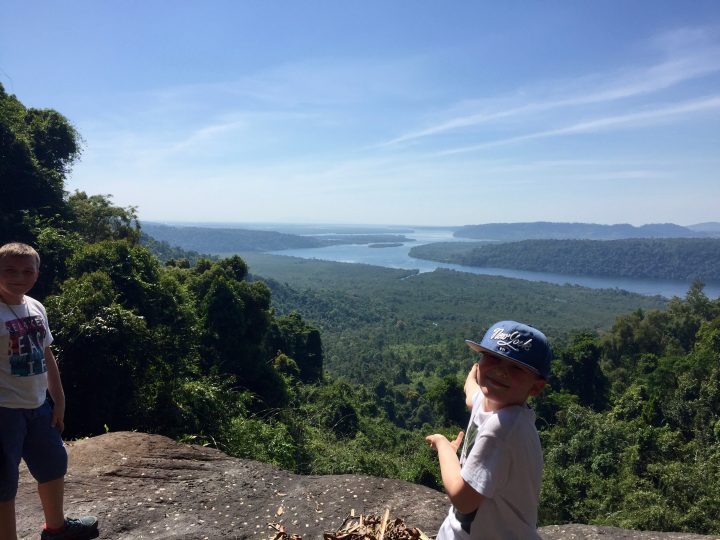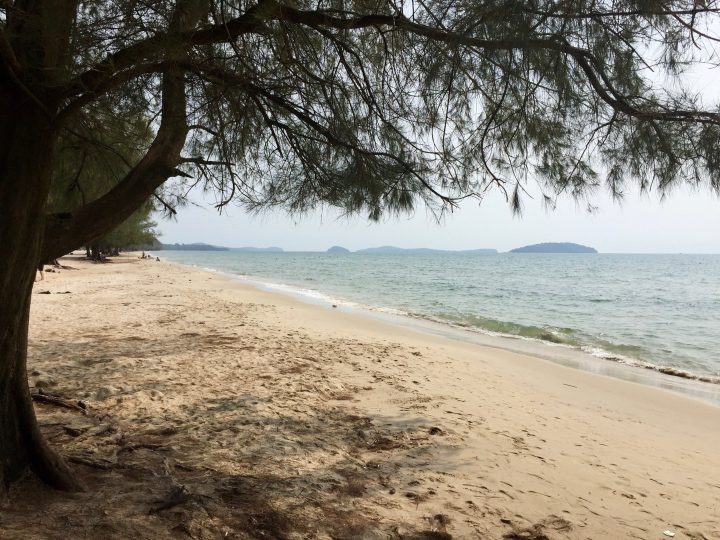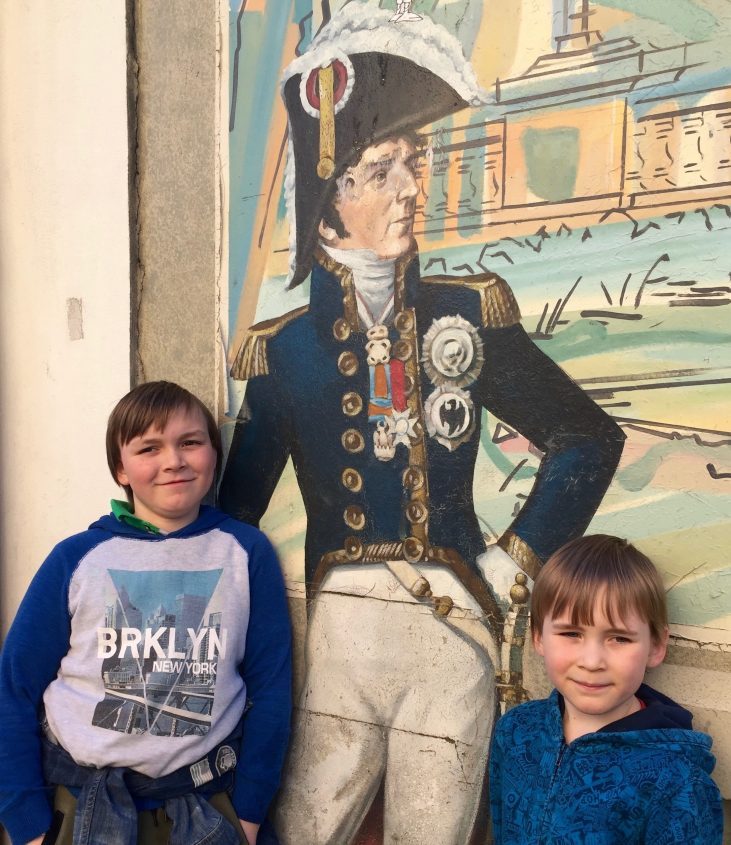Sometimes, you are lucky enough to meet some extraordinary people. We met an amazing Vietnamese man – who not only is well educated about his country and its culture – but also has some unique experiences and stories to tell about the Vietnam war. That is one of our favorite things about Conscious Travelling. You will learn about the world through unique and personal stories from those who live it. You can rarely read about these stories. But now, here is one Vietnamese mans wisdom and some other interesting things we found while travelling in Southern Vietnam in 2019.
When we travelled to Southern Vietnam around the Mekong River we came across a beautiful nature park in the middle of nowhere. We had been researching for some bunkers and tunnels from the Vietnam War, but didn’t want to go to the normal touristy places around Hoh Chi Minh City. We stayed in Cao Lahn as almost the only Western tourists in the whole city, and took a taxi to “>Xeo Quyt Tourist Area.
Again, almost no Westerners when we arrived, so no one spoke English. Except one man. The administration manager. He spent several hours with us guiding us around the area and gave us more information about the Vietnam culture and the war then we could have dreamt of. We ended our day there taking a boat ride in the magical surroundings. So that day get a 5 star review from us.
This post is about some interesting facts and stories we learned that day, some that we never heard of before. These are stories and information we learned, but we take no responsibility for the accuracy of it all. With that said, just because an expert says it, who says it is accurate? Everyone comes from their perspectives and beliefs, so who is right and wrong? Maybe everyone, as we all have our version of what happened. Our guide has family on both sides fighting the Vietnam war, and was very “neutral” in his perspective. He didn’t pick a side as he could see reasons for his father and uncle to choose as they did. But, more of that later in this post. This is what we were told by our guide and some information we picked up on our Vietnam trip:

Stories & Facts from the Vietnam War
Our guide told us the story of his family. As many other families, his father and uncle were on different sides of the war. That has had huge consequences for their family even today, as you will learn later on.
In Vietnam, the common name for the war is Kháng chiến chống Mỹ, or the “Resistance War Against America. That could be interpreted as: “America, mind your own f*n business”… 😉
The Vietnam War was a military conflict between North Vietnam and U.S.-aided South Vietnam from 1955–1975. The conflict has deep historical roots, most recently the First Indochina War between the communist North and the French-backed South, and the subsequent splitting of Vietnam into North and South.
Our guide’s uncle had gone to University and befriended some Americans and democratic propagandists in Ho Chi Minh City (back then Saigon). So when war came about he chose to fight against his brother and the Communist party of the North.
The leader of North Vietnam, Nguyễn Sinh Cung, better known by the pseudonym Ho Chi Minh, was the president of communist North Vietnam from 1954 to 1965. Educated in France and the Soviet Union, Ho Chi Minh was a devoted communist and savvy political operator who often presented himself as a nationalist in order to gain popular support. Our guide’s father supported the nationalistic approach and didn’t see it as communism at all.
Leaders of the free world feared a “domino effect” regarding the spread of communism. The theory held that if communism took root in one country, it would soon spread to others, in this case, neighboring nations like Laos, Cambodia, and Thailand. They were partly right, as Cambodia had its own devastating faith with Communism. You can read more about that here.
The Tet Offensive, which began January 30, 1968, was the largest offensive of the Vietnam War. North Vietnamese and Viet Cong forces began a coordinated series of attacks against key South Vietnamese targets on the Vietnamese new year.
An estimated 1.3 million military combatants died in the Vietnam War, from all countries involved, as well as 1 million civilians. No one really knows how many died, as there was so many body parts spread around in tiny pieces. They couldn’t know if it was 100 or 200 people lying in the same area. Helicopter shootings over farmers, their families and their water buffaloes killed thousands of civilians. Every Vietnamese was the enemy it seemed. The guerrilla warfare that characterized the Vietnam War often resulted in civilian massacres, as it was difficult to distinguish “friendly” South Vietnamese from the Communist Viet Cong spread throughout the South.
One of the worst recorded incidents in the Vietnam War is the My Lai Massacre. The United States military command ordered U.S. soldiers to attack a village believed to be filled with Viet Cong (Communist Northern soldiers). The village was actually occupied mainly by women, children, and elderly men. American troops massacred over 500 civilians in the ensuing attack in the My Lai Village close to the Cambodian boarder.
What is not often discussed is the consequences the Vietnam War had on its neighbor Cambodia. The Cambodian boarders were hugely attacked and bombed by the American army to prevent the North Vietnamese troops to enter and flee into Cambodia to get resources. President Nixon had many secret missions going on there it is claimed. It is estimated that at least 1 million civilian Khmers (Cambodians) died in the Vietnam War for no reason at all.
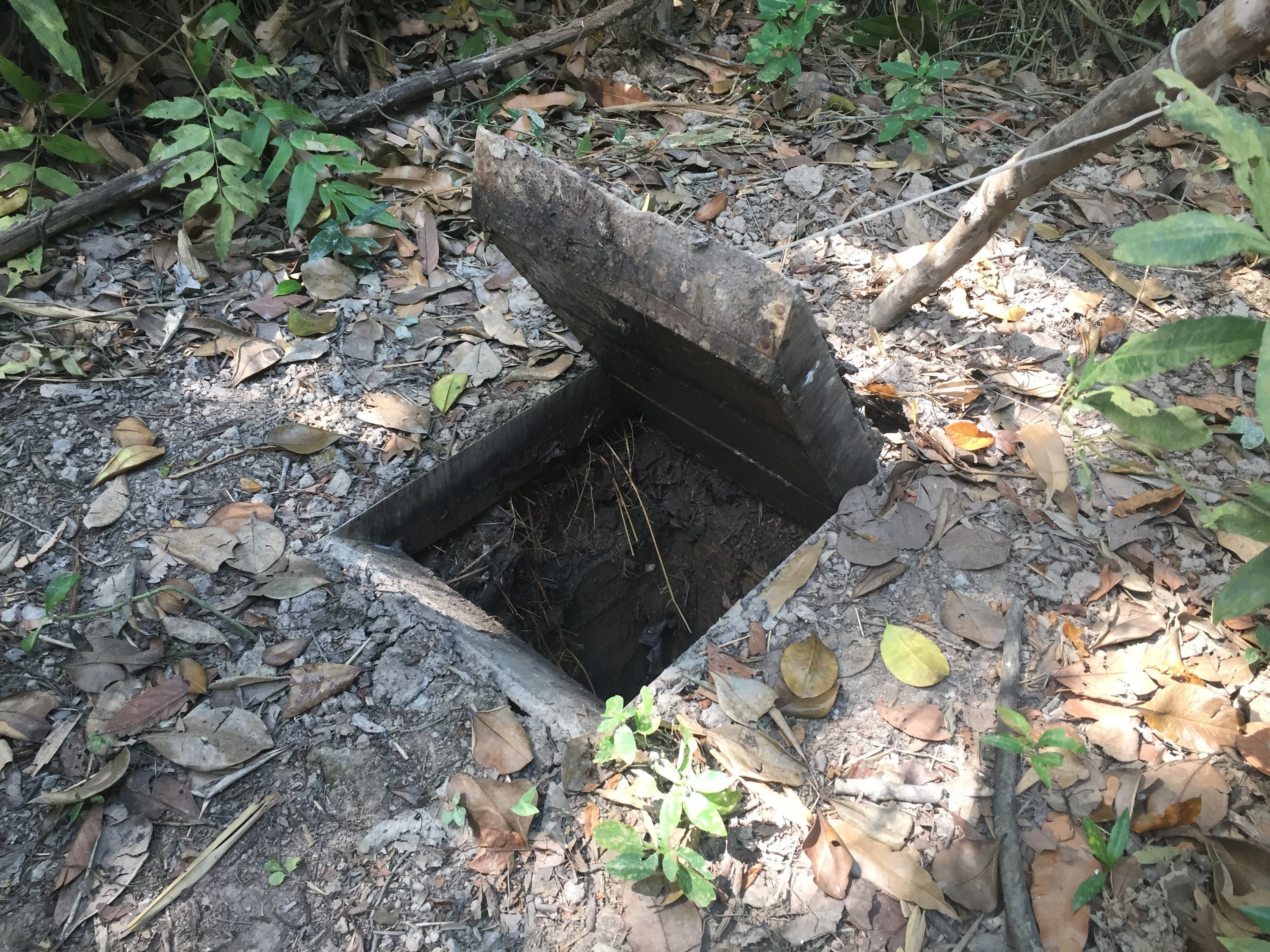
Personal hole to hide when enemy was close
Soldiers on the Ground
Our guide also gave us a lot of information on the life of the soldiers on the ground. There were almost more soldiers dying from starvation, snake and spider bites than from bombs and shots. The holes they dug and hid in were in the rain season filled with water where the snakes lived too. So soldiers had the choice to get shot or possibly drown or get bitten by snakes in their bunker holes. The holes would not fit a large Western man, and sometimes they stayed there for weeks.
Every soldier had his own private hole that only he knew was located. Not even his family would know in case his family was tortured to snitch on his whereabouts. Therefore, many corps can still be buried in holes never identified.
They had tunnels – either in Z or L shapes. If the American soldiers came they could hide in the curves of the tunnel. The American soldier would have to enter the tunnel or throw in a grenade to get them out. Then the grenades wouldn’t go all the way in either. Often tunnels ended out in the river where they could swim under the water and escape that way. They used bamboo straws to breathe through under the water or hid under large leaves. Despite the heat on land, the water was cold and many drowned or died from snakebites, while hiding in the river. The King Cobras were common back then and a nasty way to go.
During the rain seasons the rivers would be wild and current and many areas would be over flooded. The mosquitos that arrived with the rainy season killed many soldiers on both sides.
The Viet Cong had very little weapons. Pits filled with spiked bamboo and covered over with leaves, called “punji pits,” were common hazards faced by U.S. soldiers in Vietnam. When the soldiers jumped down from the helicopters they were spiked or broke their necks from landing in the deep pits. The Viet Cong soldiers also used huge rocks they threw down from the trees upon the Americans.
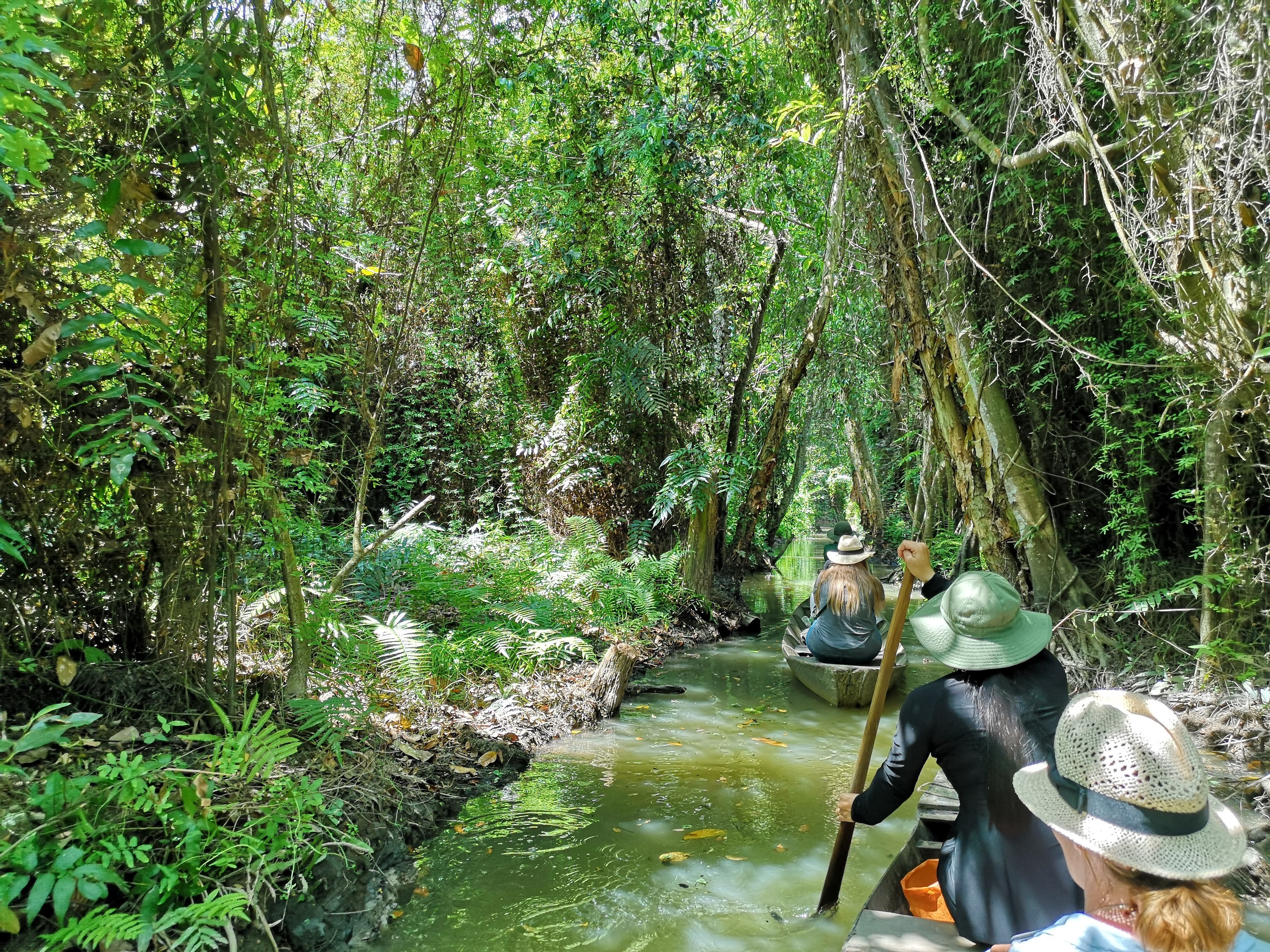
Vietnam river tour
Consequences of the war today
President Nixon suspended military operations on January 15 1973. The Paris Peace Accord was signed on January 27, and the war officially ended. In 1975 North Vietnam took Saigon, the capital of South Vietnam, and took control of the country. Saigon was renamed Ho Chi Minh City.
To this day, children in Vietnam are being born with horrific birth defects from the lingering effects of “Agent Orange,” an herbicide used by the U.S. military to destroy forest cover used by Viet Cong forces.
Our guide´s uncle was banned from Vietnam and had to flee to the U.S.A. To this day he or his children are not allowed to visit Vietnam on regular basis. They are branded as traitors. One child was granted to visit on a tourist visa for 14 days in 2014, where he could meet his family for the first time. The soldier brothers are dead, but their family lives on – on different continents. All because two young brothers had different perspectives on what was right and wrong. Those choices made them enemies for some years, but their brotherly love prevailed and they stayed in touch over the phone and by letters. They didn’t hold any grudges against each other. That is an honorable and inspiring story and lesson for us all…

Military Museum in Cao Lahn, Vietnam
For us, strange Food and Drink habits
During the Vietnam War there was very little to eat. Also, with helicopters hovering over they couldn’t have fires going so they would be detected. A common food for the soldiers was therefore snails they caught. They sprinkled some salt and lemon over that they kept in their pockets. The soldiers drank snake tree water or banana tree water to survive.
- As horrified our dog loving daughter was, it is true that they do eat their dogs in Vietnam (and Cambodia). They keep them as pets for the first couple of years before they feast on them.
- There used to be thousands of King Cobras in the Mekong river. They were caught and put in bottles of rice wine or whiskey to increase the libido of the men and their hangover…. Today there are very few left so to buy a snake today can cost up to $200.
- All around Vietnam and South East Asia you find huge buildings with small windows. They are “bird nest plantations”. The nests were formerly harvested from limestone caves close to the ocean. With the escalation in demand these sources have been expanded by these nesting houses, usually reinforced concrete structures. The nests are said to be rich in nutrients such as protein, and are traditionally believed to provide health benefits. Most nests are built during the breeding season by the male swiftlet over a period of 35 days. They take the shape of a shallow cup stuck to the cave wall. The nests are composed of interwoven strands of salivary cement. Birds nests have high levels of calcium, iron, potassium, and magnesium.Edible bird’s nests are among the most expensive animal products consumed by humans, with nests being sold at prices up to about $3,000 per pound/$6,600/kg, depending on quality. The Asians believe that it promotes good health, especially for the skin. The nests have been used in Asian cooking for over 400 years, most often as bird’s nest soup. They have canned Bird´s Nests drinks and also drink them as tea. Yes, we did try a can, but couldn’t get ourselves to finish it… 😉 It tastes sweet and is a bit lumpy (as Aloe Vera drinks also are).
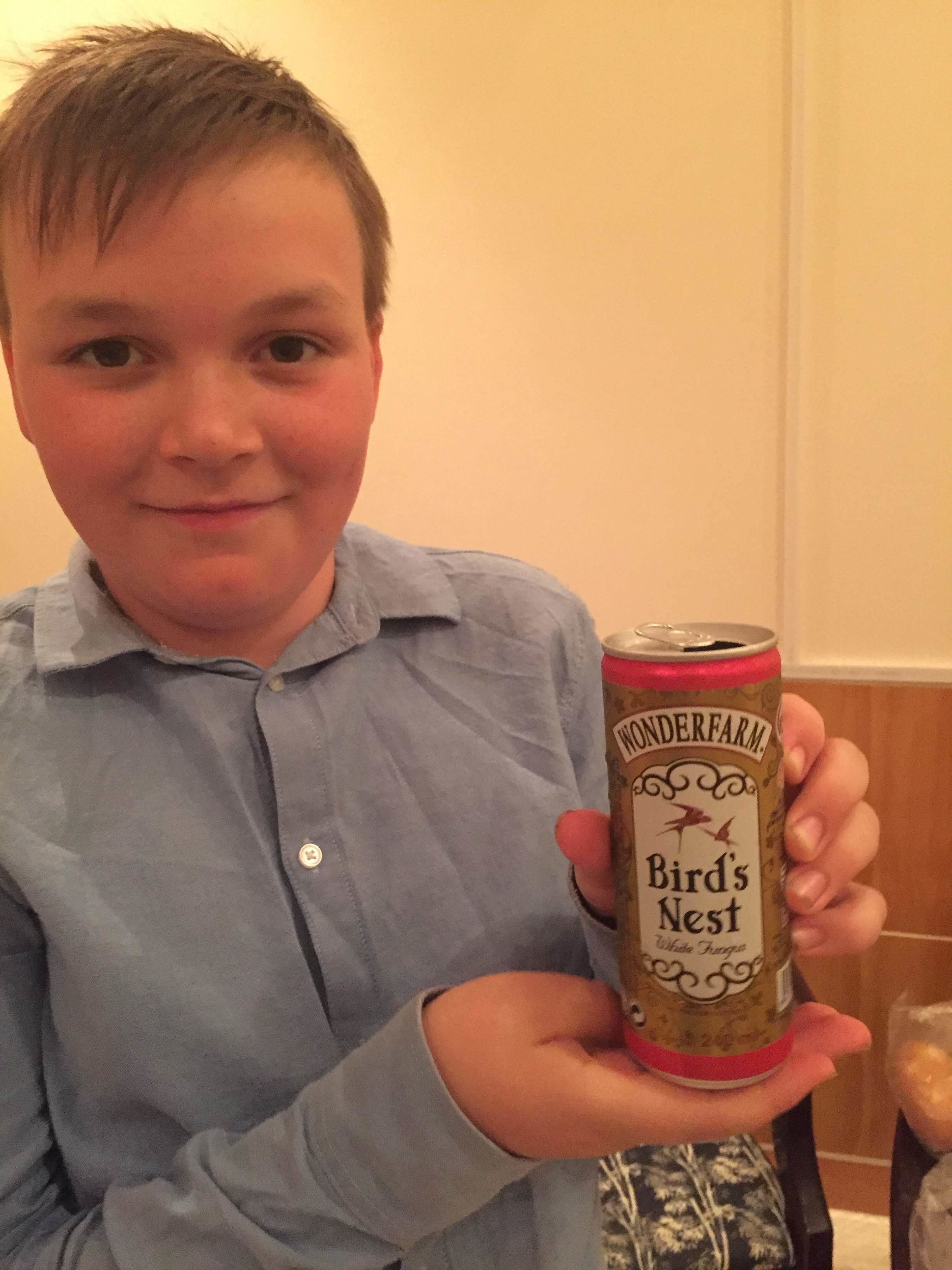
Birds nest drink
Money
How much do you make? Again, this is our guide’s estimation from the suburb area he is from. If you haven’t any higher degree (above 5th grade) you most likely will make around $60/month. That might double if you have a higher degree.
Chances are if you are born into a family with low education you will have it too. You pay for your education. If you would go from secondary school to university level you would end up having to pay around $50 000. Which will be almost impossible to pay on a salary on less than a $100/month.
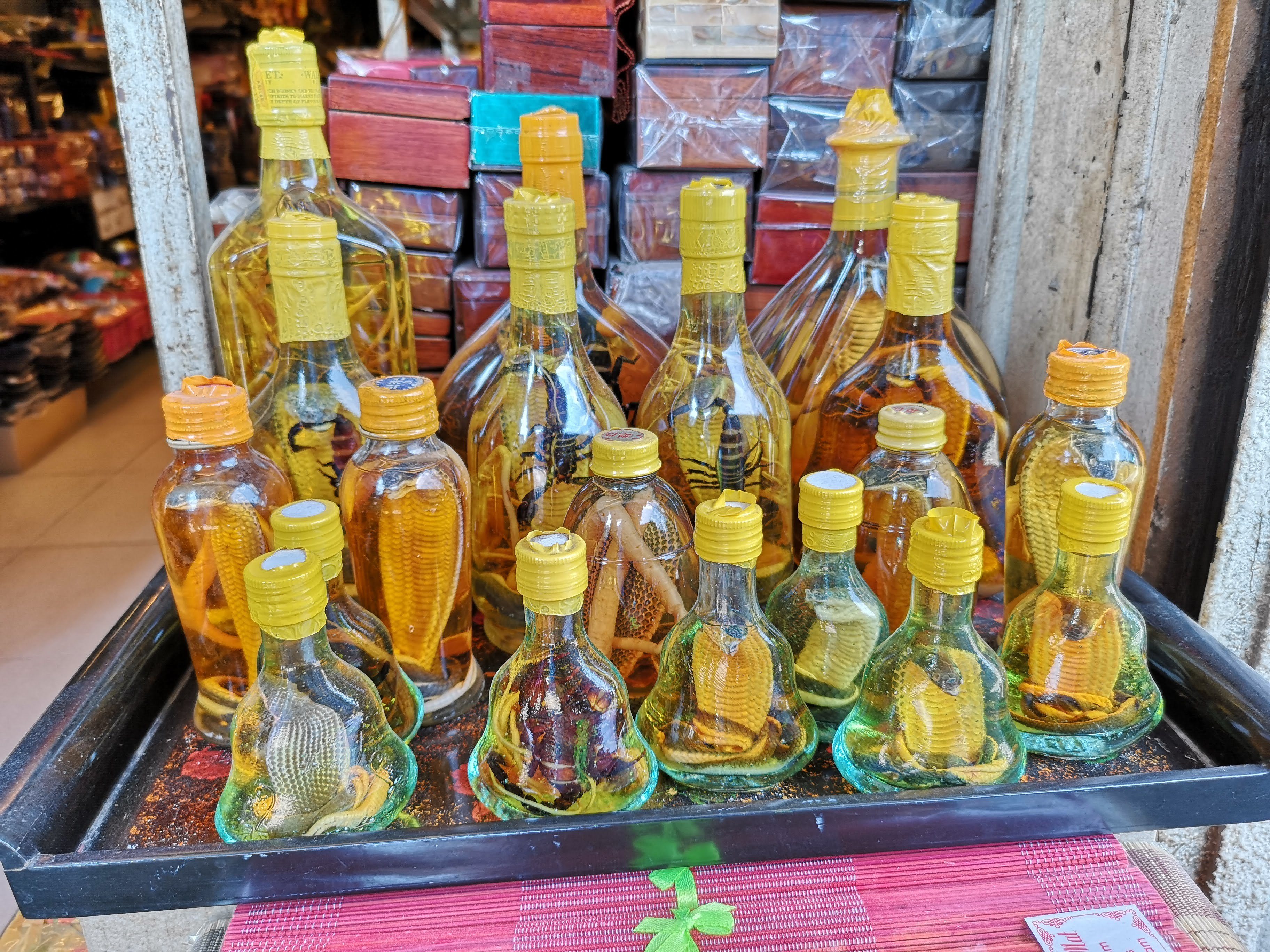
King Cobra Libido drinks
Love life
In the large cities such as Hoi Chi Minh City the old traditions and ways have faded, but in the county side, the old ways have remained to this day. Our guide told us that parents still decide whom to marry.
If you date someone, if you are out more than an hour or two alone together and not in public, as a woman you might be rejected for life if you don’t end up marring that guy you dated. Our guide told us about how he had dated a woman before whom he was supposed to marry. Then, at university he met the love of his life and went against the rules. He begged for his parents’ blessings for 8 years, before they finally gave in and allowed him to marry the love of his life instead of the predetermined arrangement. That woman is still single though as she was “tainted” by another man from a few dates…
The woman follows her husband and he and his family are obligated to support her if she doesn’t want to work.
In Vietnam you don’t say; “I love you”, but might write it somewhere. There are many trees with carved love letters around… In general, they are not showing much affection and emotions towards each other and are often too shy to speak about emotions.
In a way, maybe our guide’s family could express their love for each other in their letters over the oceans… Always find the silver lining, right?
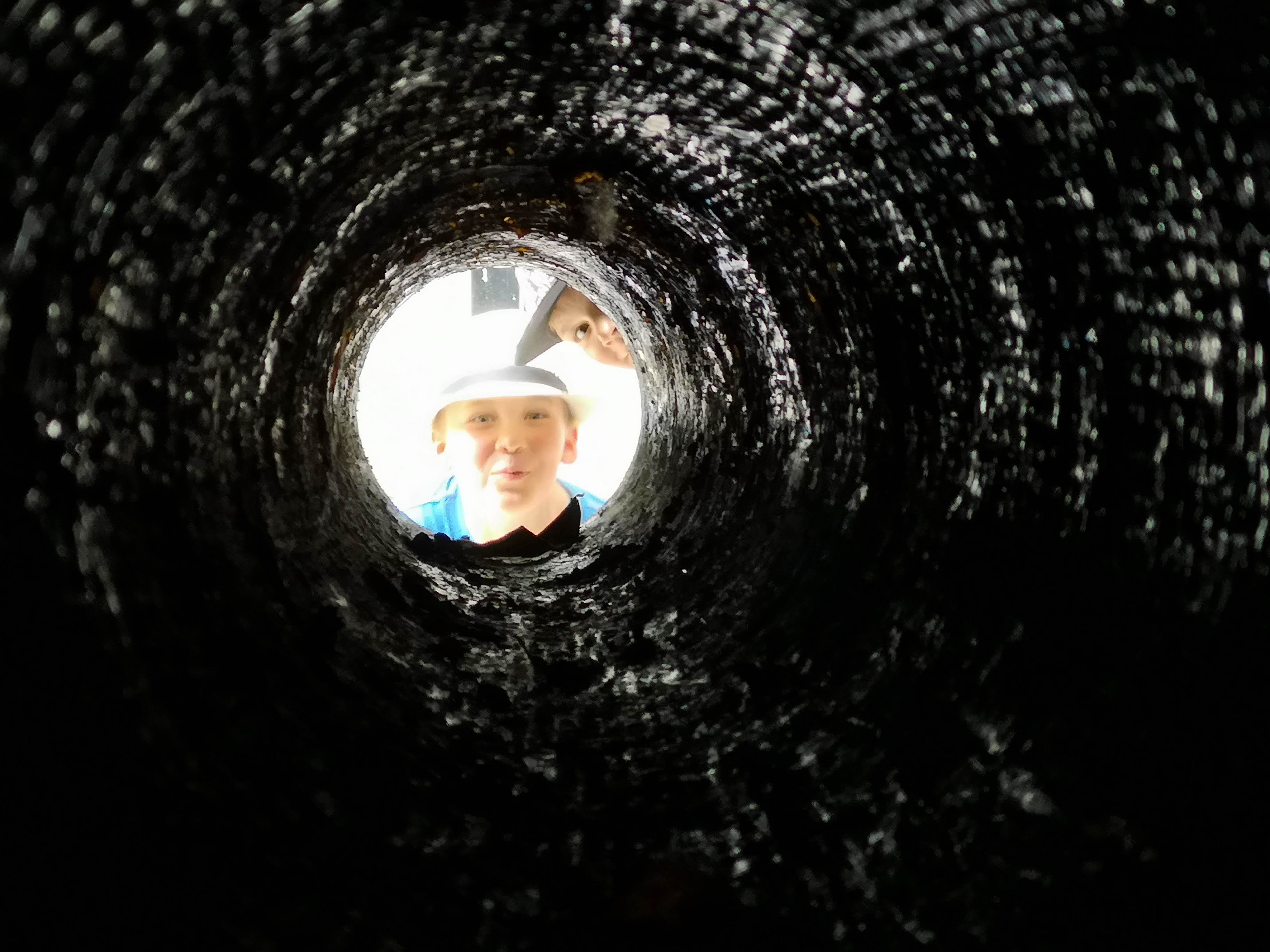
tunnel sight from weapon view
In Conclusion
There are always several sides of a story. What we found so amazing in the story of the guide and his family was that he didn’t pick a side. He could so easily be against the Americans, or the Communist party. He didn’t. He told us facts of what the soldiers did to each other. Not to blame one side or the other. Who are we to judge others? Everyone has their reason for doing as they do. They eat dogs in Vietnam and we don’t. We might not agree with that action – our daughter sure doesn’t – but that doesn’t make us right or better, just different. That is part of the wisdom from the stories by the Vietnamese man we want to bring out to the world. Honor and respect your neighbor as yourself. But then, also respect and honor yourself… We do not have to agree, but we do have to honor life.
